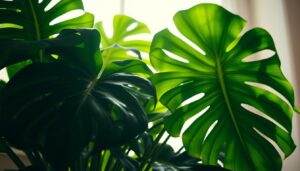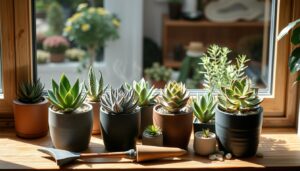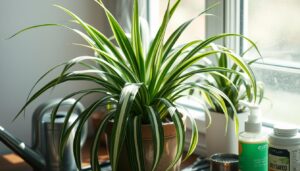Introduction
In the world of indoor foliage, few plants captivate quite like the Bird Nest Fern. With its graceful fronds unfurling in an enchanting spiral, this botanical beauty adds a touch of tropical elegance to any space. But while its allure is undeniable, nurturing a Bird Nest Fern to flourish requires a delicate balance of care and attention.
Join us on a journey through the verdant realms of Bird Nest Fern care, where we’ll explore the art of fostering thriving fronds and vibrant greenery. From understanding its habitat to mastering the nuances of watering and light, let’s delve into the secrets of cultivating lush, verdant ferns that breathe life into your home sanctuary.
Understanding the Bird Nest Fern
Before delving into the intricacies of Bird Nest Fern care, it’s essential to grasp the fundamentals of this fascinating plant. Native to tropical regions such as Southeast Asia, Australia, and the Pacific Islands, the Bird Nest Fern (Asplenium nidus) thrives in warm, humid climates, typically found in the understory of dense forests. Its name stems from the way its leaves form a rosette resembling a bird’s nest, providing a unique visual appeal.
Key Characteristics
To cultivate a thriving Bird Nest Fern, it’s crucial to familiarize yourself with its key characteristics:
- Frond Structure: Bird Nest Ferns boast broad, arching fronds that emerge from a central rosette. These fronds can grow up to several feet in length, creating an impressive display of lush greenery.
- Leaf Texture: The leaves of a Bird Nest Fern are glossy and leathery, with pronounced veins running through them. This texture helps the plant retain moisture and withstands the rigors of its natural habitat.
- Rhizome Formation: Unlike some fern species, Bird Nest Ferns do not spread via underground rhizomes. Instead, they propagate primarily through spores produced on the undersides of their fronds.
- Preferred Environment: Bird Nest Ferns thrive in indirect sunlight and high humidity. They prefer temperatures between 65°F to 80°F (18°C to 27°C) and require consistent moisture to flourish.
Care Essentials
Now that we’ve acquainted ourselves with the Bird Nest Fern’s characteristics, let’s explore the essential elements of caring for this captivating plant:
Aspect | Description |
Light | Indirect Sunlight: Bird Nest Ferns prefer bright, indirect light. Avoid exposing them to direct sunlight, as it can scorch their delicate fronds. |
Watering | Moderate Moisture: Keep the soil consistently moist but not waterlogged. Water when the top inch of soil feels dry, ensuring thorough but gentle watering to prevent root rot. |
Humidity | High Humidity: Mimic the fern’s natural habitat by maintaining high humidity levels. Use a humidifier, pebble tray, or regular misting to create a humid microclimate around the plant. |
Soil | Well-Draining Mix: Plant Bird Nest Ferns in a loose, well-draining potting mix rich in organic matter. A blend of peat moss, perlite, and compost provides an ideal growing medium. |
Fertilization | Moderate Feeding: Feed Bird Nest Ferns monthly during the growing season (spring and summer) with a balanced liquid fertilizer diluted to half strength. Avoid over-fertilizing, which can lead to salt buildup and leaf burn. |
Pruning | Prune Spent Fronds: Remove yellowing or damaged fronds regularly to promote new growth and maintain the plant’s aesthetic appeal. Use clean, sharp scissors or pruning shears to make clean cuts. |
Managing Watering and Moisture Levels
One of the most critical aspects of Bird Nest Fern care is managing watering and moisture levels effectively. These ferns hail from humid, tropical environments where they receive ample moisture from frequent rainfall and high humidity levels. Replicating these conditions is key to ensuring the health and vitality of your Bird Nest Fern.
Watering Frequency
Bird Nest Ferns thrive in consistently moist but not waterlogged soil. Finding the right balance is crucial to prevent issues such as root rot or dehydration. Here’s a guideline for watering your Bird Nest Fern:
- Check Soil Moisture: Before watering, check the top inch of soil. If it feels dry to the touch, it’s time to water. Avoid letting the soil dry out completely between waterings, as this can stress the plant.
- Watering Technique: When watering your Bird Nest Fern, aim for thorough but gentle watering. Water until you see moisture emerging from the drainage holes at the bottom of the pot, ensuring the entire root ball is adequately moistened.
- Avoid Overwatering: While Bird Nest Ferns appreciate consistent moisture, overwatering can be detrimental. Soggy soil can lead to root rot and other fungal diseases. Always err on the side of slightly underwatering rather than overwatering.
Humidity Management
High humidity is essential for the health and well-being of Bird Nest Ferns, as they originate from tropical regions with ample moisture in the air. Here are some tips for maintaining optimal humidity levels:
- Humidifier: Consider using a humidifier to increase humidity levels around your Bird Nest Fern, especially if you live in a dry climate or during the winter months when indoor air tends to be drier.
- Pebble Tray: Place your fern’s pot on a tray filled with pebbles and water. As the water evaporates, it creates a humid microclimate around the plant.
- Misting: Regularly misting the foliage of your Bird Nest Fern can help increase humidity levels. Use a spray bottle filled with room-temperature water to mist the leaves, ensuring they receive a fine mist without becoming soaked.
- Grouping Plants: Grouping your Bird Nest Fern with other houseplants can help create a microclimate with higher humidity levels. The collective transpiration from the plants can increase moisture in the air.
Monitoring and Adjusting
It’s essential to monitor your Bird Nest Fern closely and adjust your watering and humidity management techniques as needed. Factors such as temperature, air circulation, and seasonal changes can affect moisture levels, so remain vigilant and responsive to your fern’s needs.
Optimizing Light Conditions
Proper light exposure is crucial for the health and growth of Bird Nest Ferns. While these ferns thrive in bright, indirect light, it’s essential to understand their light requirements and how to optimize conditions for optimal growth.
Understanding Light Needs
Bird Nest Ferns are naturally found in the understory of tropical forests, where they receive filtered sunlight through the dense canopy above. As a result, they prefer bright, indirect light rather than direct sunlight. Here’s a breakdown of their light requirements:
- Bright, Indirect Light: Place your Bird Nest Fern in a location where it can receive bright, indirect light throughout the day. This can be near a north or east-facing window where it can benefit from gentle morning or afternoon sunlight filtered through sheer curtains or blinds.
- Avoid Direct Sunlight: Direct sunlight can scorch the delicate fronds of Bird Nest Ferns, leading to sunburn and damage. It’s crucial to protect them from direct sun exposure, especially during the intense midday hours.
- Low-Light Tolerance: While Bird Nest Ferns prefer bright, indirect light, they can tolerate lower light conditions, making them suitable for areas with limited natural light, such as offices or rooms with north-facing windows.
Optimizing Light Conditions
To ensure your Bird Nest Fern receives the right amount of light, consider the following tips:
- Rotate Regularly: Rotate your fern regularly to promote even growth and prevent it from leaning towards the light source. This ensures all parts of the plant receive adequate sunlight, preventing uneven growth.
- Use Sheer Curtains or Blinds: If your Bird Nest Fern is near a window with direct sunlight, use sheer curtains or blinds to filter and diffuse the light. This helps prevent harsh sun exposure while still allowing ample light to reach the plant.
- Supplemental Lighting: In areas with low natural light, consider supplementing with artificial grow lights. Choose full-spectrum LED lights designed for indoor plants and position them above the fern to provide additional illumination.
- Monitor Light Levels: Pay attention to how your Bird Nest Fern responds to its current light conditions. If you notice signs of stress such as yellowing or scorched leaves, adjust its placement to provide more suitable light exposure.
Lighting Guide for Bird Nest Ferns
Light Condition | Description |
Bright, Indirect Light | Place near north or east-facing windows with sheer curtains or blinds to filter sunlight. |
Moderate Indirect Light | Position further away from windows or in rooms with bright, ambient light throughout the day. |
Low Light | Suitable for areas with limited natural light, such as north-facing rooms or offices with fluorescent lighting. |
Choosing the Right Soil and Pot
Selecting the appropriate soil and pot for your Bird Nest Fern is essential for providing optimal growing conditions and ensuring the plant’s health and vitality. From soil composition to pot size, several factors contribute to creating an environment where your fern can thrive.
Soil Composition
Bird Nest Ferns prefer a loose, well-draining potting mix that retains moisture without becoming waterlogged. Here’s a guide to creating the ideal soil mix for your fern:
- Organic Matter: Incorporate organic matter such as peat moss or coconut coir into the soil mix to improve moisture retention and provide essential nutrients.
- Perlite or Vermiculite: Add perlite or vermiculite to the soil mix to enhance drainage and prevent compaction. These lightweight materials promote aeration and prevent waterlogged conditions.
- Compost or Leaf Mold: Include compost or leaf mold in the soil mix to enrich it with nutrients and promote healthy root development. These organic amendments provide a steady supply of nutrients as they decompose.
- Avoid Heavy Soils: Steer clear of heavy soils such as clay or garden soil, as they retain too much moisture and can lead to root rot. Opt for a lightweight, well-draining mix specifically formulated for indoor plants.
Pot Selection
Choosing the right pot is equally important for the well-being of your Bird Nest Fern. Consider the following factors when selecting a pot:
- Size and Depth: Choose a pot that provides ample room for your fern’s root system to spread. A pot that is slightly larger than the plant’s current root ball allows room for growth without overwhelming the plant.
- Drainage Holes: Ensure the pot has drainage holes at the bottom to allow excess water to escape freely. Proper drainage is essential for preventing waterlogged soil and root rot.
- Material: Opt for a porous material such as terracotta or ceramic, which allows air and moisture to pass through the pot walls. Avoid non-porous materials like plastic, as they can trap moisture and lead to soil stagnation.
- Aesthetics: Consider the aesthetic appeal of the pot and choose one that complements your indoor decor. Select a pot with a design and color that enhances the beauty of your Bird Nest Fern while providing functionality.
Potting Guide for Bird Nest Ferns
Soil Composition | Description |
Peat Moss or Coconut Coir | Retains moisture and provides essential nutrients. |
Perlite or Vermiculite | Improves drainage and prevents soil compaction. |
Compost or Leaf Mold | Enriches soil with nutrients and promotes healthy root development. |
Lightweight Mix | Avoid heavy soils such as clay or garden soil. Opt for a lightweight mix formulated for indoor plants. |
Conclusion: Nurturing Nature’s Elegance
In the realm of indoor gardening, few plants possess the mesmerizing allure and graceful elegance of the Bird Nest Fern. From its lush, spiraling fronds to its tropical origins, this botanical gem captivates the hearts of plant enthusiasts with its verdant beauty. As we conclude our journey through the art of Bird Nest Fern care, it becomes evident that fostering the health and vitality of these majestic ferns is both a science and an art.
By understanding the nuances of light, water, soil, and potting, we unlock the secrets to creating an environment where Bird Nest Ferns thrive. From optimizing light exposure to providing the ideal balance of moisture and nutrients, every aspect of care contributes to the well-being of these botanical treasures. As stewards of nature’s elegance, we embrace the responsibility of tending to our ferns with diligence and reverence.
In return for our care and attention, Bird Nest Ferns reward us with their lush foliage, transforming our indoor spaces into lush sanctuaries of greenery. Their presence brings a sense of tranquility and connection to the natural world, reminding us of the beauty and resilience of life itself. So let us continue to nurture and cherish these botanical wonders, for in their flourishing, we find joy, inspiration, and a profound appreciation for the wonders of the plant kingdom.
If you happen to be in our neck of the woods, stop in and say Hi at The Landscape Connection.
If you might like to see more information on Gardening and Houseplants, check out Michelle on YouTube! I think you will really enjoy it!





Pingback: String of Pearls, The Stunning Trailing Succulent That Adds Elegance to Any Space
Pingback: Staghorn Fern plant, How to Grow This Unique, Wall-Mounted Plant in Humid Spaces